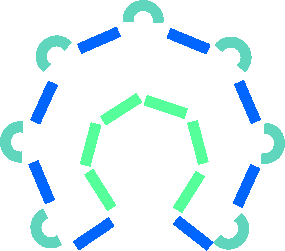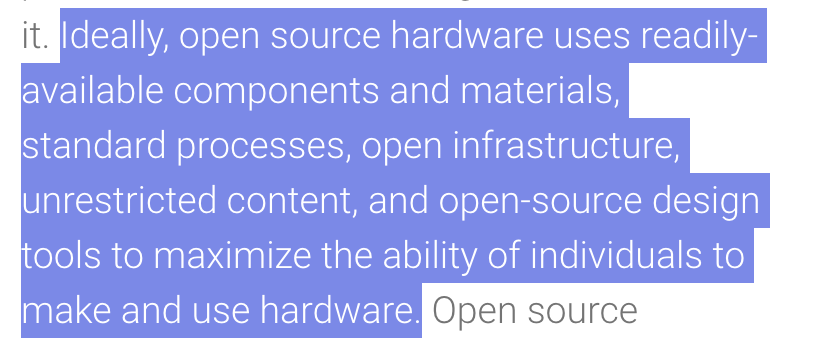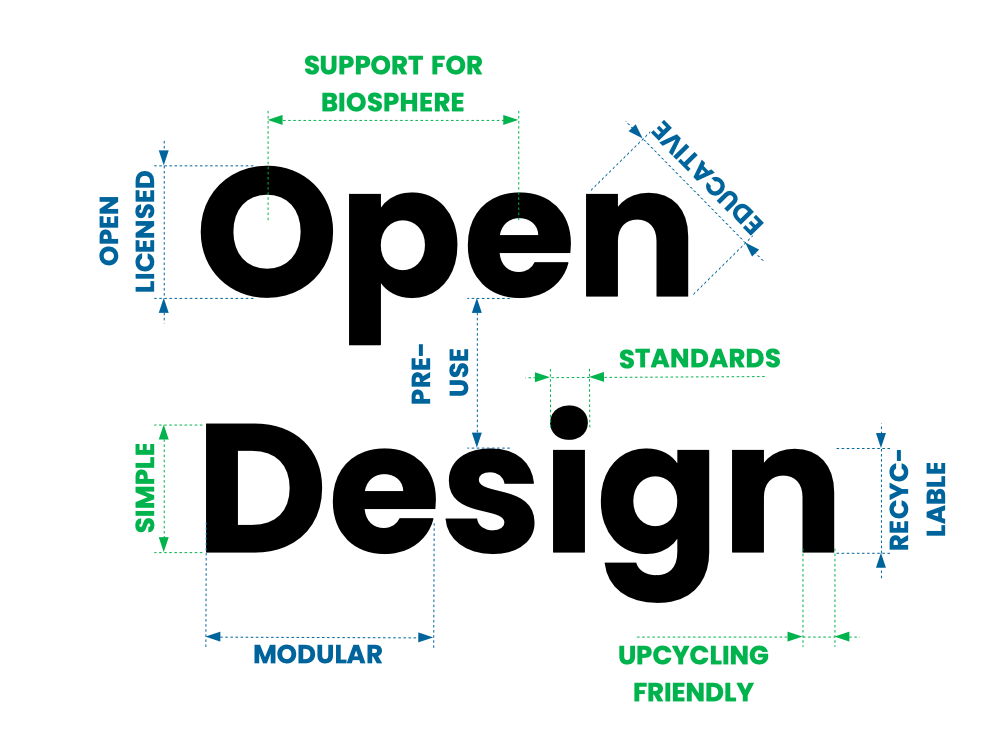The differences of open source hardware & open source software & how to overcome them?
.
Question 1 – The Differences?
Open Source Software is wildly successful. The wikipedia as well. But hardware is behind. What do you think why? What are the key differences of hardware in comparison to software? And how to overcome them in an Open Source project?
Answer 1 – Bits vs Atoms
The difference between software and hardware is striking. Computers are the same everywhere in the world. The same basic general purpose machine. So you can download Open Source Software from the other side of the globe and start using it within minutes on your local machine. The computer it runs on is already built. The atoms that make the software come to live are already in front of you and properly arranged. With hardware it is different. You can only download the design files for a tractor. But the difficult and expensive part of sourcing parts and materials and putting them together is still ahead of you.
This is how ’shipping‘ software works, but not hardware.
But it goes beyond assembly.
List
Let’s just list differences:
- Sourcing. Find, buy, pay, transport, store components. (More complex and expensive supply chain.)
- Assembly. Takes time, tools, space, energy and skills. Or a whole production facility!
- Copy. Software is easier to copy than hardware. Copy & Paste vs. building another car.
- Licensing. The licensing situation around hardware is fundamentally different from that around software. The solutions of open source software are not transferable because software is copyright based, hardware uses things like design rights or patents (More on this here)
- Documentation. The documentation of hardware is more complex and extensive and time-intensive – it is different.
- Different Skills. Skills to work with hardware are often more expensive to learn. A practical introduction to welding takes more resources than a practical introduction to C++ you can do via YouTube on a Laptop in your kitchen. This might reduce the potential group of co-developers in size.
- Testing. Software testing is easier and cheaper than hardware testing.
- More/fewer standards. Computers work the same way all over the world. For hardware we have different grown engineering schools, different measurement systems (imperial vs. metric system), different local suppliers and producers for parts and materials and so on. This makes it difficult to reconstruct what was built on one side of the globe on the other side.
- Updates. It is easier and cheaper to make changes in already running software than in already built hardware.
- Shipping. Software sits on hardware that is already shipped.
All of this makes it harder to find a community of co-developers. And it explains that open hardware is big(ger) where we talk about digital fabrication (3d printing, laser cutting, CNC milling) – where we actually get closer to this →
*
*
Question 2 – Overcome Them?
Now that you know about the differences of open hardware & open source software? How can we overcome them? How can we design hardware and things connected to it to reduce the gap between software and hardware and activate some of the good things, possibilities and effects around open source software also for hardware?
Answer 2 – Design Accordingly
We already talked about this a bit above: “… it explains that open hardware is big(ger) where we talk about digital fabrication (3d printing, laser cutting, CNC milling) – where we actually get closer to this →
But is there more than that?
Let’s see what the Open Source Hardware definition has to say about this:
*
*
This talks about the hardware design itself. How it should be made. In order to enable others to recreate it quicker and cheaper.
Interestingly if you follow these design principles you are also very likely to create a sustainable circular product! As simple design and the use of open standards enables repair, reuse, refurbishment and even recycling.
Let’s have a look:
Open Source Design
Design with
readily-available components & materials
standard processes
open infrastructure
unrestricted content
open-source design tools
Circular Economy Design
Design for
standardization & compatibility
ease of maintenance & repair
upgradability & adaptability
dis- and reassembly
recycling
local materials
simple
modular
product attachment & trust
durability
(6 of those were taken from Conny Bakkers Book “Products that last”)
*
If you look careful into this you’ll see that in some parts they basically ask for the same thing and in other parts they complement each other – give each other hints how to achieve their design ideals even better.
▷ Open source hardware is successful where the product is a building block for the creative work of others. The circular economy wants a design change that makes everything a building block for everything.
.
Both heavily benefit from simplicity. Simple things are easier to recreate.
Visual from the article: “What is Open Circular Design?“
.
.
surviving climate change? Which city is smarter? The „smart city“ with street lights that are technically sophisticated and networked? Or the city with open documented, accessible, easy to understand street lights? When a storm hits the city infrastructure – which lamps are easier to repair locally? When the coastline moves – which lamps are easier to dismantle, take away and put up in another region? Openness helps us to adapt!
→ This is why we study Open Hardware (Business Models) and Design for Open Source in this course.





